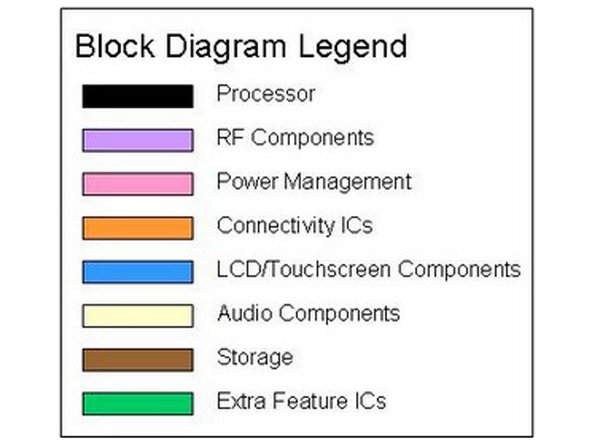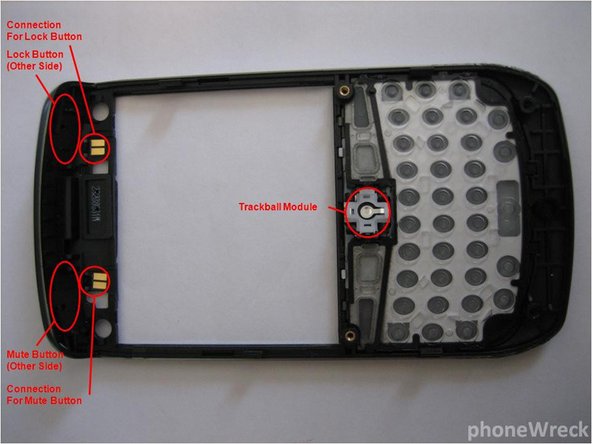Einleitung
Overview of the BlackBerry Curve hardware with circuit diagrams and labeled chips. See www.phoneWreck.com for more detailed information on the BlackBerry Curve and other devices.
Was du brauchst
-
-
So here’s the big kahuna, the mountain giant, the piercing javelin, if you will. The Curve 8900 (Javelin) has done well to garner a lot of press, because it’s a well functioning BlackBerry, in a tight package, fitted with some crazy insides, yet lacks 3G.
-
The BlackBerry Curve 8900 is an update to the BlackBerry Curve 83xx series. Of course, ditching the traditional xx10/xx20/xx30 customs, the Javelin (easier to say than Curve 8900) includes both GPS and Wi-Fi options, similar to RIM’s recent devices.
-
The one we have here is actually one of the first device launches from T-Mobile in Germany, but the hardware should be exactly the same — except of course, the QWERTZ keyboard.
-
-
-
First and foremost, the Curve 8900 (hereon referred to as “Javelin”) is a gorgeous device. It’s got the same chrome trim as the Storm, relatively the same shape, and a faux-brushed-aluminum backing. It’s an astonishingly light device, even with the brick of a battery.
-
The keyboard is similar to the old Curve’s, but almost seems to fit tighter. In reality, the size differences of the Javelin aren’t very different from the existing Curve, but gosh, the improvements to the aesthetics are amazing.
-
To be honest, we’re being a little nitpicky here, but the Javelin’s battery cover is quite annoying. In effect, the battery cover “pops” in and out near the latch when you’re grasping it with too much force. Perhaps it’s this particular unit, but the annoyance of a flimsy battery cover has always got to our heads.
-
-
-
-
So right off the bat, much of what you see here is actually very similar to the Bold.
-
The most significant change is the Freescale chipset including the SC29746VK processor and the MMM7010 RF transceiver.
-
Skyworks takes the win for modulating power for the RF transceiver with the SKY77526.
-
Finally, SiRF continues to provide GPS units, and CSR provides Bluetooth functionality.
-
-
-
When you turn the device on (after its traditional white screen + hour glass sequence), the screen blows you away. It’s bright, it’s clear, it’s gorgeous. It runs the same resolution as the Bold, but in an even smaller screen.
-
Another interesting thing is the new cursor movements. To the delight of those who needed treatment for “BlackBerry Thumb“, the new system has an accelerated trackball motion that lets you move the cursor from one side of the screen to the other side in a quick flick.
-
In standard RIM fashion, the keyboard is better than ever. To the grunts of the meeting-filled corporate employee, the keyboard is a little louder than normal. You might get looks from a few more people than you normally would with the Bold, but WOW does this thing type fast.
-
-
-
The camera implementation on this phone is also decent. While it won’t replace a good point and shoot, the 3.2MP camera with auto-focus generally fits the bill for on-the-go captures.
-
Our complaint with the camera is its limited zoom (digital zoom only goes to 2.0x) and the excessive effort it requires to get there.
-
In terms of media playback, the phone rocks. The only thing to note is that the speaker seems to be the same as the Storm’s. In terms of sound quality and well, bulk, the Bold still dominates.
-
-
-
The main IC diagram can be found here.
-
Looking at the datasheets for these ICs, it seems as if everything was built to be as small as possible. Judging from the main PCB and its insanely small size, our guess is that RIM is really looking to make things thinner. The Storm had a similarly sized PCB as well.
-
Cypress Semiconductor continues to win designs for their West Bridge solution, with their CYWB0124AB chip, enabling fast transfer speeds as we earlier noted.
-
MtekVision makes an interesting entrance as well, claiming quite a large space for their camera signal processor. We’re guessing this is what’s responsible for their relatively quick and strong camera captures.
-
Texas Instruments, as always, makes some notable wins with their audio codec, Wi-Fi chipset, and the power management unit.
-









